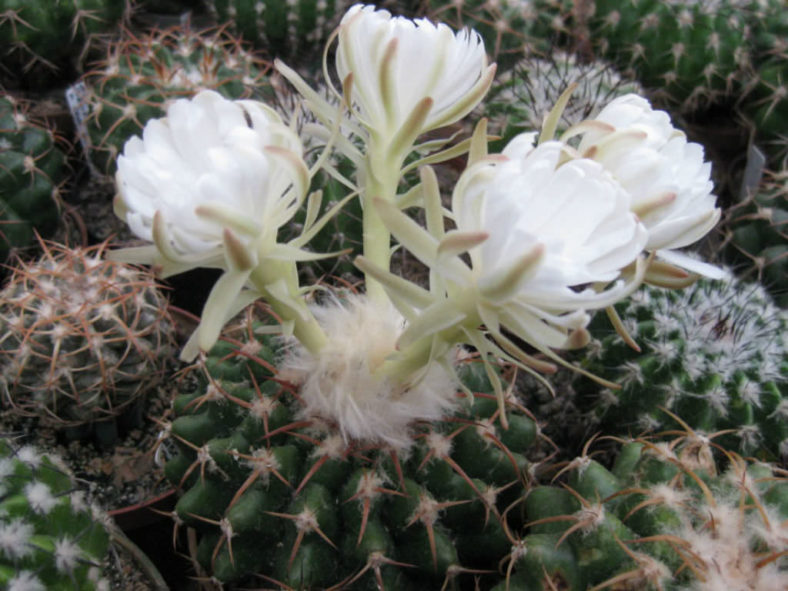Discocactus is a genus of cacti highly prized by collectors around the world. Precisely what it is that makes them so attractive is uncertain. Some factors are likely their relatively compact size, unique and showy white flowers, and slow growth.
The species within this genus are flattened to globose in shape with stems that hardly exceed 3 inches (7.5 cm) in height and less than 10 inches (25 cm) in diameter. Stems are ribbed, sometimes tuberculate, with fuzzy areoles or dense spines. Most plants remain solitary but may form clumps. Flowering plants form a wooly terminal cephalium, out of which appear the flowers at the end of a long, thin floral tube. The nocturnal flowers are fragrant and touted by many growers as the best-smelling of all cactus flowers. Discocactus bloom in summer, on and off. Flowers are generally white and open in the late afternoon until the following morning.
Growing Conditions
Light: These cacti will take full sun but prefer a little shade in the afternoon.
Water: Water with extreme care after the soil has dried out.
Temperature: During the rest period, Discocactus should be kept above 59 °F (15 °C) if grown on its own roots and at 46 °F (8 °C) if grafted.
Soil: The balance of the potting medium should be sufficient to allow good drainage, 50% compost to 50% gravel, perlite or pumice.

Grower's Tips
Discocactus are among the most difficult cacti to keep growing on their own roots and are almost always seen as grafted plants. If growing on their own roots is attempted, the soil must be highly free-draining, and watering should only take place after the soil has dried out and only on sunny and warm days.
These cacti are tropical plants and should be kept warm in winter. The grafted plants are less cold-sensitive, but none have any frost tolerance. Mature Discocactus stop growing and instead divert their energy into developing a cephalium. The cephalium is a specialized flowering head generally covered with fibers.
Links
- Back to genus Discocactus
- Succupedia: Browse succulents by Scientific Name, Common Name, Genus, Family, USDA Hardiness Zone, Origin, or cacti by Genus